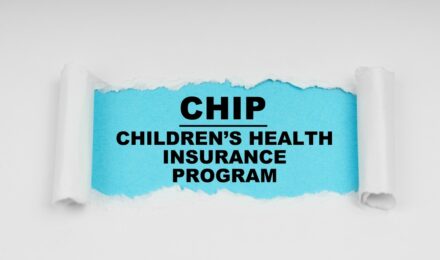Contents
The start of a new school year should be an exciting milestone for children and families. Yet for many households, back-to-school season is marked by financial stress. The costs of supplies, clothing, technology, and childcare pile up quickly.
According to the National Retail Federation, families with school-aged children spent an average of $890 on back-to-school expenses in 2024, the highest on record. For low- and moderate-income households, such costs can represent more than a month’s rent or groceries.
Fortunately, a range of government programs and nonprofit initiatives exist to help ease these burdens. From free school supply drives to expanded childcare tax credits, families have multiple pathways to secure assistance. As the 2025–2026 academic year approaches, understanding these options can ensure that every child starts the year with the tools and support they need to succeed.
The Rising Cost of Back-to-School
Back-to-school expenses have steadily climbed due to inflation, the rising price of technology, and the growing list of required materials. Laptops and tablets, once considered optional, are now essential for many middle and high school students. Athletic fees, extracurricular costs, and transportation expenses further stretch family budgets.
The financial strain is especially acute for families with multiple children. While some can spread out purchases over the summer months, many households face lump-sum costs in August. This is also the period when other expenses, such as rent increases or end-of-summer childcare costs, come due. Without assistance, families may be forced to choose between essentials, putting children at a disadvantage before the school year even begins.
Free School Supply Programs
One of the most visible forms of back-to-school assistance comes through free supply drives. Across the country, nonprofit organizations, school districts, and community groups distribute backpacks, notebooks, and other essentials to students in need. National campaigns like Stuff the Bus, coordinated by United Way, mobilize donations from local businesses and volunteers to equip children with basic tools.
Many school districts also partner with local charities to provide supplies directly to classrooms, ensuring that children are not stigmatized for receiving help. Some states use federal Title I funds to support distribution of materials in high-poverty schools. Parents should contact their child’s school or district office to learn about scheduled distribution events, which typically occur in early to mid-August.
Clothing and Technology Assistance
Clothing costs are another significant burden, particularly as children outgrow last year’s items. Several states provide vouchers for low-income families through Temporary Assistance for Needy Families (TANF) or state-level welfare programs. Nonprofit clothing closets, such as Goodwill and Salvation Army centers, also expand hours and donations in the back-to-school season.
Technology support is increasingly essential. The federal Affordable Connectivity Program (ACP) provides eligible households with monthly discounts on internet service and, in some cases, a one-time discount on a laptop or tablet. While ACP’s long-term funding remains uncertain, many states are supplementing with digital equity grants. Families should explore both federal and state-level opportunities to ensure children can access online learning platforms.
Childcare and After-School Support
Childcare is one of the largest expenses families face, particularly for younger children or for households with parents working irregular hours. Federal and state programs can help offset these costs. The Child Care and Development Fund (CCDF) provides subsidies to eligible families, administered by state agencies. In addition, many states have expanded Head Start and pre-K programs that offer free or low-cost early childhood education.
For school-aged children, after-school programs provide both supervision and enrichment. The federal 21st Century Community Learning Centers program funds academic and recreational opportunities outside of school hours, often at no cost to families. Local YMCAs, Boys & Girls Clubs, and community centers also provide low-cost after-school care, sometimes subsidized by grants or charitable donations.
Tax Credits and Financial Relief
Tax policy plays an increasingly important role in supporting families during the school year. The Child Tax Credit (CTC) remains one of the largest sources of relief, providing up to $2,000 per qualifying child. While Congress has debated expansions in recent years, families should ensure they are claiming the maximum allowable benefit on their returns.
The Child and Dependent Care Tax Credit (CDCTC) is another key resource. It offsets a portion of childcare expenses for children under 13 or dependents with disabilities. Families can claim up to 35 percent of eligible expenses, with maximum credits determined by income. Although the enhanced pandemic-era version has expired, the standard credit remains available and can provide meaningful relief.
State-level tax credits further supplement federal benefits. For example, several states now offer refundable credits for school supply expenses, childcare costs, or dependent care. Parents should review their state’s Department of Revenue website to identify available credits and filing requirements.
What Families Should Do Now
Parents preparing for back-to-school should take proactive steps in August. First, contact schools and community organizations to confirm supply drive dates and eligibility requirements. Many events operate on a first-come, first-served basis, and supplies run out quickly.
Second, review eligibility for programs like ACP, CCDF, and Head Start, which may require applications or waitlists. Third, keep receipts for all educational expenses. Even small purchases may be deductible or reimbursable through tax credits. Finally, parents should ensure that their income and dependent information is current with the IRS and state tax agencies to avoid delays in receiving credits.
Reliable Resources for Families
Several national resources can guide families through back-to-school assistance. United Way’s 211 service provides information about local supply drives and childcare programs. The U.S. Department of Health and Human Services offers detailed information about the Child Care and Development Fund and Head Start. The IRS maintains up-to-date guidance on federal tax credits, including the CTC and CDCTC, with calculators to help families estimate benefits. Together, these resources provide a roadmap for families navigating the financial pressures of the school year.
Conclusion
The back-to-school season should not be defined by financial anxiety. Yet for millions of American families, the rising cost of supplies, clothing, childcare, and technology threatens to overshadow the excitement of a new academic year.
By leveraging free supply programs, clothing and technology assistance, childcare subsidies, and tax credits, families can significantly reduce these burdens. Awareness and preparation are key. With proactive planning, parents can ensure that children walk into classrooms this fall equipped, confident, and ready to learn.
References
1. Back-to-School Spending Data, 2024. (National Retail Federation)
2. Child Care and Development Fund (CCDF). (U.S. Department of Health and Human Services)
3. Child Tax Credit and Other Dependent Credits. (Internal Revenue Service)
Contents
The start of a new school year should be an exciting milestone for children and families. Yet for many households, back-to-school season is marked by financial stress. The costs of supplies, clothing, technology, and childcare pile up quickly.
According to the National Retail Federation, families with school-aged children spent an average of $890 on back-to-school expenses in 2024, the highest on record. For low- and moderate-income households, such costs can represent more than a month’s rent or groceries.
Fortunately, a range of government programs and nonprofit initiatives exist to help ease these burdens. From free school supply drives to expanded childcare tax credits, families have multiple pathways to secure assistance. As the 2025–2026 academic year approaches, understanding these options can ensure that every child starts the year with the tools and support they need to succeed.
The Rising Cost of Back-to-School
Back-to-school expenses have steadily climbed due to inflation, the rising price of technology, and the growing list of required materials. Laptops and tablets, once considered optional, are now essential for many middle and high school students. Athletic fees, extracurricular costs, and transportation expenses further stretch family budgets.
The financial strain is especially acute for families with multiple children. While some can spread out purchases over the summer months, many households face lump-sum costs in August. This is also the period when other expenses, such as rent increases or end-of-summer childcare costs, come due. Without assistance, families may be forced to choose between essentials, putting children at a disadvantage before the school year even begins.
Free School Supply Programs
One of the most visible forms of back-to-school assistance comes through free supply drives. Across the country, nonprofit organizations, school districts, and community groups distribute backpacks, notebooks, and other essentials to students in need. National campaigns like Stuff the Bus, coordinated by United Way, mobilize donations from local businesses and volunteers to equip children with basic tools.
Many school districts also partner with local charities to provide supplies directly to classrooms, ensuring that children are not stigmatized for receiving help. Some states use federal Title I funds to support distribution of materials in high-poverty schools. Parents should contact their child’s school or district office to learn about scheduled distribution events, which typically occur in early to mid-August.
Clothing and Technology Assistance
Clothing costs are another significant burden, particularly as children outgrow last year’s items. Several states provide vouchers for low-income families through Temporary Assistance for Needy Families (TANF) or state-level welfare programs. Nonprofit clothing closets, such as Goodwill and Salvation Army centers, also expand hours and donations in the back-to-school season.
Technology support is increasingly essential. The federal Affordable Connectivity Program (ACP) provides eligible households with monthly discounts on internet service and, in some cases, a one-time discount on a laptop or tablet. While ACP’s long-term funding remains uncertain, many states are supplementing with digital equity grants. Families should explore both federal and state-level opportunities to ensure children can access online learning platforms.
Childcare and After-School Support
Childcare is one of the largest expenses families face, particularly for younger children or for households with parents working irregular hours. Federal and state programs can help offset these costs. The Child Care and Development Fund (CCDF) provides subsidies to eligible families, administered by state agencies. In addition, many states have expanded Head Start and pre-K programs that offer free or low-cost early childhood education.
For school-aged children, after-school programs provide both supervision and enrichment. The federal 21st Century Community Learning Centers program funds academic and recreational opportunities outside of school hours, often at no cost to families. Local YMCAs, Boys & Girls Clubs, and community centers also provide low-cost after-school care, sometimes subsidized by grants or charitable donations.
Tax Credits and Financial Relief
Tax policy plays an increasingly important role in supporting families during the school year. The Child Tax Credit (CTC) remains one of the largest sources of relief, providing up to $2,000 per qualifying child. While Congress has debated expansions in recent years, families should ensure they are claiming the maximum allowable benefit on their returns.
The Child and Dependent Care Tax Credit (CDCTC) is another key resource. It offsets a portion of childcare expenses for children under 13 or dependents with disabilities. Families can claim up to 35 percent of eligible expenses, with maximum credits determined by income. Although the enhanced pandemic-era version has expired, the standard credit remains available and can provide meaningful relief.
State-level tax credits further supplement federal benefits. For example, several states now offer refundable credits for school supply expenses, childcare costs, or dependent care. Parents should review their state’s Department of Revenue website to identify available credits and filing requirements.
What Families Should Do Now
Parents preparing for back-to-school should take proactive steps in August. First, contact schools and community organizations to confirm supply drive dates and eligibility requirements. Many events operate on a first-come, first-served basis, and supplies run out quickly.
Second, review eligibility for programs like ACP, CCDF, and Head Start, which may require applications or waitlists. Third, keep receipts for all educational expenses. Even small purchases may be deductible or reimbursable through tax credits. Finally, parents should ensure that their income and dependent information is current with the IRS and state tax agencies to avoid delays in receiving credits.
Reliable Resources for Families
Several national resources can guide families through back-to-school assistance. United Way’s 211 service provides information about local supply drives and childcare programs. The U.S. Department of Health and Human Services offers detailed information about the Child Care and Development Fund and Head Start. The IRS maintains up-to-date guidance on federal tax credits, including the CTC and CDCTC, with calculators to help families estimate benefits. Together, these resources provide a roadmap for families navigating the financial pressures of the school year.
Conclusion
The back-to-school season should not be defined by financial anxiety. Yet for millions of American families, the rising cost of supplies, clothing, childcare, and technology threatens to overshadow the excitement of a new academic year.
By leveraging free supply programs, clothing and technology assistance, childcare subsidies, and tax credits, families can significantly reduce these burdens. Awareness and preparation are key. With proactive planning, parents can ensure that children walk into classrooms this fall equipped, confident, and ready to learn.
References
1. Back-to-School Spending Data, 2024. (National Retail Federation)
2. Child Care and Development Fund (CCDF). (U.S. Department of Health and Human Services)
3. Child Tax Credit and Other Dependent Credits. (Internal Revenue Service)






